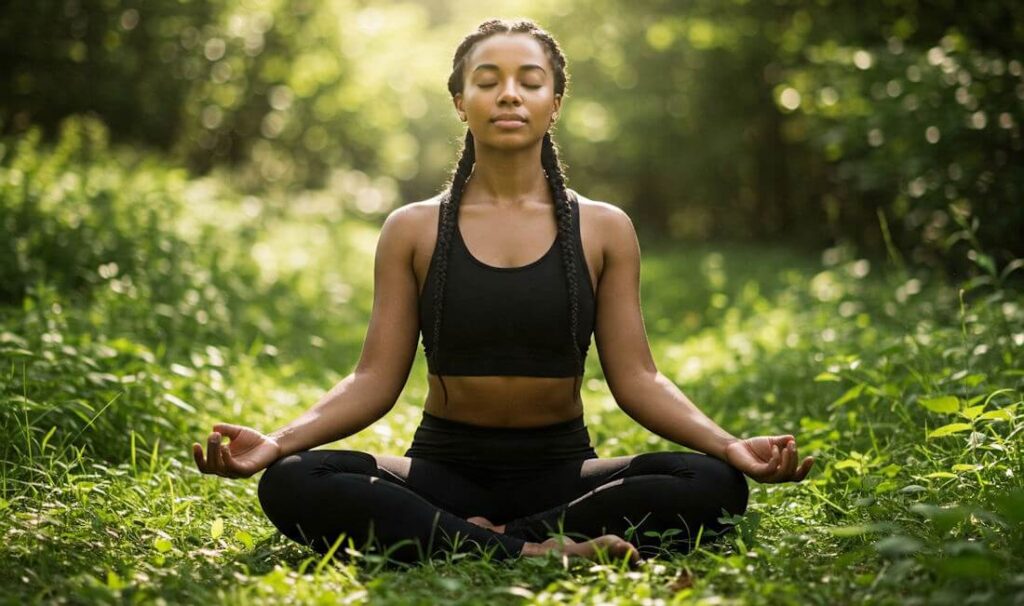In the realm of contemporary wellness practices, the concepts of mindfulness and movement have garnered significant attention. Mindfulness, characterized by focused awareness and presence in the moment, serves as a gateway to deeper understanding of one’s thoughts, emotions, and physical sensations. Movement, particularly through disciplines such as yoga, complements this awareness by encouraging physical engagement and body consciousness. Together, they create a holistic approach to health and well-being.
Yoga, an ancient practice rooted in harmony between the body and mind, embodies the principles of movement and mindfulness. It employs a series of postures and breathing techniques designed not merely for physical fitness, but to cultivate a tranquil mind and a balanced emotional state. Integrating mindfulness into yoga practice can enhance the psychological benefits, allowing practitioners to develop a greater sense of self-awareness and to connect with their inner selves on a deeper level.
The growing trend of integrating mindfulness and yoga is evident in various wellness programs across the globe. As individuals seek holistic strategies for managing stress, anxiety, and overall health, the synergy between these practices becomes increasingly popular. Mindfulness-based stress reduction programs often incorporate yoga to magnify the body’s therapeutic effects while fostering a calm and focused mindset.
Moreover, the integration of mindfulness within movement practices facilitates not just mental clarity, but also promotes physical health. By practicing mindfulness, individuals can deepen their understanding of their body’s limitations and capabilities, which can lead to safer exercise habits and an overall healthier lifestyle. This convergence of mindfulness and movement represents a significant shift towards addressing both mental and physical health, making it essential in today’s wellness paradigm.
Understanding Mindfulness
Mindfulness is a mental practice rooted in ancient traditions, particularly within Buddhist philosophy. At its core, mindfulness involves the conscious effort to focus attention on the present moment, acknowledging and accepting one’s thoughts and feelings without judgment. This approach encourages an enhanced awareness of bodily sensations, emotions, and mental activities, fostering a deeper understanding of one’s internal experiences.
The principles of mindfulness emphasize the importance of living in the present. Instead of ruminating on the past or worrying about the future, mindfulness teaches individuals to engage fully with the here and now. This practice can be cultivated through various techniques, including meditation, yoga, and other forms of mindful movement. The objective is to create a heightened state of awareness that allows for greater clarity and insight regarding one’s emotional and psychological landscape.
The benefits of mindfulness are well-documented, extending beyond mere relaxation. Research indicates that incorporating mindfulness into daily life can lead to significant reductions in stress. By fostering emotional regulation, individuals are better equipped to manage anxiety and depressive symptoms. Moreover, mindfulness cultivates a sense of overall well-being, enhancing quality of life by promoting a more balanced perspective in daily interactions and challenges.
In addition to its mental health benefits, mindfulness aids in enhancing focus and concentration, which can lead to improved productivity. Practicing mindfulness encourages individuals to approach tasks with intention, reducing procrastination and distractions. As such, mindfulness is not only a therapeutic tool but also a way to enhance one’s overall performance in both personal and professional spheres.
The Essence of Yoga as a Movement Practice
Yoga represents a profound practice that encompasses not just physical movement but also mental and emotional exploration. At its core, yoga is rooted in a series of physical postures, known as asanas, designed to promote flexibility, strength, and overall physical health. Each asana is intended to challenge the body while allowing it to achieve equilibrium. The practice of these postures varies widely, reflecting the individual’s needs, experience level, and specific goals. From the invigorating sun salutations to the restorative child’s pose, the diverse range of asanas demonstrates the adaptability and accessibility of yoga.
In conjunction with these physical movements, the technique of pranayama, or breath control, plays a pivotal role in yoga practice. Through various breathing exercises, practitioners learn to harness the vital energy within, fostering a deeper connection between the body and mind. This focus on breath not only enhances physical performance during asanas but also instills a sense of calm and tranquillity. By synchronizing breath with movement, individuals can cultivate mindfulness, ultimately leading to improved mental clarity and emotional stability.
Moreover, meditation often forms an integral part of yoga practice, serving as a bridge that connects the physical dimension of movement with the spiritual. While physical asanas pave the way for greater awareness and presence, the meditative aspect encourages introspection and self-discovery. Practitioners can delve into their inner thoughts, identifying patterns and emotions that may have otherwise gone unnoticed. The synergy between these elements—the intricate dance of asanas, pranayama, and meditation—creates a holistic approach to well-being, enhancing physical vitality while fostering a resilient mental state. As such, yoga emerges not merely as a method of exercise but as a comprehensive practice promoting the harmony of body, mind, and spirit.
The Interconnection Between Yoga and Meditation
Yoga and meditation are often perceived as distinct practices, yet they share profound interconnections that enhance overall well-being. At their core, both aim to cultivate awareness, promote a sense of peace, and foster a deeper understanding of oneself. The relationship between these two practices can be understood through the lens of preparation: yoga serves as a foundational practice that prepares both the body and the mind for meditation.
In its essence, yoga encompasses physical postures, breath control, and mindfulness, which together create a conducive environment for meditation. The physical aspects of yoga help to release tension and stress from the body, creating a more relaxed state that is essential for effective meditation. When practitioners engage in yoga, they not only enhance their physical flexibility and strength but also cultivate mental clarity and focus. This combination aids in transitioning into the meditative state, as it reduces distractions caused by discomfort or restlessness.
Moreover, the practice of yoga fosters a heightened state of consciousness. As practitioners flow through various asanas, they are encouraged to pay attention to their breath and bodily sensations, restricting the mind from wandering. This mindfulness is vital when moving into meditation, where focus and presence are paramount. The skills developed through yoga—such as bringing awareness to the breath and recognizing thoughts as they arise—are invaluable in deepening the experience of meditation.
Integrating yoga and meditation allows individuals to approach their health holistically. When practiced together, they complement each other, creating a harmonious balance between physical activity and mental stillness. By understanding and embracing the interconnection between yoga and meditation, practitioners can enhance their overall journey towards personal growth and wellness.
Benefits of Combining Yoga and Meditation
Integrating yoga and meditation into one holistic practice yields numerous benefits that enhance both mental and physical well-being. One of the most significant advantages of this combination is enhanced focus. Research indicates that practices like yoga, which often involve mindfulness techniques, can significantly improve concentration and cognitive performance. By focusing on breath control and body awareness during yoga, practitioners learn to cultivate a present-moment awareness that carries over to daily tasks, ultimately sharpening mental clarity.
Furthermore, the combination fosters increased emotional resilience. Regular engagement in yoga and meditation creates a supportive environment where individuals can explore and manage their emotions effectively. Expert opinions highlight that these practices equip participants with coping mechanisms that improve their ability to handle stress, anxiety, and emotional challenges gracefully. This resilience translates into higher levels of emotional stability, allowing individuals to experience life’s ups and downs with greater equanimity.
Stress relief is perhaps one of the most renowned benefits of both yoga and meditation. Participating in yoga sessions encourages relaxation and physical release, while meditation further calms the mind. Research shows that both practices alleviate cortisol levels, the hormone associated with stress response, leading to a relaxation effect that can improve overall health. Regular practitioners often report reductions in feelings of anxiety and enhancements in mood, contributing to their overall sense of well-being.
Moreover, the combination of these practices promotes improved physical health. Yoga improves flexibility, strength, and balance, while meditation reduces stress and fosters a positive mindset that motivates healthier lifestyle choices. According to various studies, these combined physical and mental enhancements can lead to a lower risk of chronic illnesses, such as heart disease and diabetes.
Finally, engaging in both yoga and meditation can result in a greater sense of inner peace. The integration of mindful movement and stillness creates a comprehensive approach to self-care that promotes tranquility and self-awareness. As individuals develop this deeper connection with themselves, they often experience a profound realization of harmony between body, mind, and spirit.
Practical Ways to Combine Yoga and Meditation
Integrating yoga and meditation into a cohesive daily routine can enhance both practices and provide a holistic approach to mindfulness and well-being. For individuals seeking to combine these disciplines, it is essential to establish a structured yet flexible routine that suits their lifestyle, respecting both their physical and mental capacities.
A beneficial way to start is by dedicating a specific time each day to both yoga and meditation. Early mornings are often recommended, as they set a calm tone for the day ahead. Begin with a gentle yoga sequence lasting about 20 to 30 minutes, focusing on poses that promote relaxation and centering. For instance, incorporating poses like Child’s Pose, Cat-Cow, or Downward Facing Dog can help ease tension and prepare the mind for meditation.
Following this yoga practice, transitioning into meditation is seamless. An initial duration of five to ten minutes can be ideal, particularly for beginners. During meditation, practitioners may choose to focus on their breath, allowing the sensations encountered during yoga to inform their mindfulness. As familiarity grows, both the length and depth of meditation can be gradually increased.
Another effective technique is to integrate meditation directly into the yoga practice. This can be done by maintaining a meditative state of awareness while moving through the flow of poses. Practitioners should strive to connect their breath with each movement, fostering a sense of present moment awareness and intentionality.
Additionally, utilizing guided meditation following yoga can enhance the experience, allowing individuals to explore various techniques such as loving-kindness or body scan meditations. It is critical to remain patient and gentle with oneself while exploring these practices, allowing for personal growth and adaptation over time. In conclusion, the synergy between yoga and meditation can yield significant benefits when approached thoughtfully and intentionally. By creating a mindful routine that complements both practices, individuals can cultivate greater awareness and tranquility in their lives.
Common Misconceptions about Yoga and Meditation
Yoga and meditation are often shrouded in a variety of misconceptions that can deter individuals from engaging in these beneficial practices. One prevalent myth is that yoga is only for the highly flexible or athletically inclined. In reality, yoga is designed to be adaptable to all body types and skill levels, encouraging individuals to explore their own physical limits rather than comparing themselves to others. This inclusivity allows practitioners of varied abilities to participate and experience the benefits of yoga.
Another common belief is that meditation requires an extensive time commitment or a secluded environment to be effective. However, even short sessions of meditation can yield positive results, making it accessible for individuals with busy lifestyles. The flexibility in practicing meditation allows individuals to find moments throughout their day—whether in a quiet corner of the office or during a brief respite at home—to engage in mindfulness and reap its benefits.
Many people also perceive yoga and meditation as spiritual practices that may not align with their beliefs. While these practices do have roots in spirituality, they can be approached purely from a psychological or physical perspective. It is entirely possible to engage in yoga or meditation without any spiritual connotation, focusing instead on personal development and well-being.
Concerns around age suitability are prevalent as well, with some individuals believing that yoga and meditation are only suitable for younger or more able-bodied individuals. Conversely, these practices can provide significant benefits for seniors or those recovering from injuries, including improved mobility and reduced stress levels. Overall, dismantling these misconceptions is crucial in promoting a more inclusive viewpoint that encourages everyone to experience the advantages of yoga and meditation, regardless of their background or circumstances.
Experiences from Practitioners
The integration of yoga and meditation often leads to profound personal transformations, as evidenced by the experiences of practitioners from various walks of life. One individual, Sarah, a busy corporate professional, discovered yoga as a means to combat stress. Initially drawn to its physical benefits, she later found that incorporating meditation enhanced her mental clarity and emotional resilience. “Practicing yoga helped me embrace my body, while meditation offered me a quiet space to listen to my thoughts. Together, they are a refuge,” she shares. Sarah’s journey illustrates how these practices can intertwine, resulting in comprehensive well-being.
Another practitioner, James, a retired veteran, emphasizes the therapeutic impact of merging yoga and meditation. After facing the challenges of PTSD, James sought methods to regain control over his mental state. He recalls, “Through yoga, I learned to connect with my breath and body. Adding meditation into my practice provided the stillness I needed to process my emotions. It has been life-changing.” His testimony underscores the synergy between physical movement and mental stillness, underscoring how yoga and meditation complement each other in fostering healing.
Similarly, Maria, a mother of three, found solace in combining yoga and meditation amidst the chaos of family life. “Finding time for myself was tough, but practicing short sessions of yoga followed by meditation helped me find my center. I feel more patient and present with my children,” she reflects. Her experience highlights how the balance of dynamic movement through yoga and contemplative practices like meditation can significantly enhance one’s quality of life, particularly in managing everyday challenges.
These anecdotal experiences illustrate the diverse advantages that arise from the harmonious blend of yoga and meditation. Each personal story reinforces the idea that these practices can foster not only physical wellness but also emotional and mental strength, encouraging individuals to explore their own paths towards holistic health.
Conclusion: Embracing the Mindful Journey
In the contemporary landscape of personal well-being, the symbiotic relationship between yoga and meditation emerges as a powerful avenue for achieving mindfulness. Throughout this discourse, we have explored how the integration of these two practices fosters a holistic approach to mental and physical health. By cultivating awareness through conscious movement, yoga serves as a gateway, allowing individuals not only to strengthen their bodies but also to cultivate a sense of inner peace. Meditation complements this journey, enabling practitioners to delve deeper into the realms of mindfulness, leading to emotional resilience and clarity of thought.
It’s essential to recognize that embarking on a mindful journey is not merely about engaging in yoga or meditation in isolation, but rather about embracing the synergy between both practices. As we have demonstrated, the fluid transitions in yoga facilitate a deeper understanding of the breath, which inherently enhances meditation practices. Such a harmonious blend not only enhances the quality of physical postures but also nurtures a present-centered mindset, crucial for maintaining emotional balance amidst life’s challenges.
For individuals seeking to enrich their lives, integrating yoga and meditation offers an opportunity to reconnect with oneself. Whether you are a seasoned practitioner or a newcomer, there exists a myriad of styles and techniques tailored to all preferences and needs. It is an invitation to explore, experiment, and discover the profound impact that these mindful practices can have on your life. By fostering a dedicated routine that incorporates both yoga and meditation, you pave the way for greater mindfulness, increased vitality, and a fulfilling existence. So, as you embark or continue on this path, consider the transformative potential that awaits in the marriage of movement and stillness.



